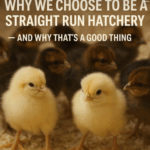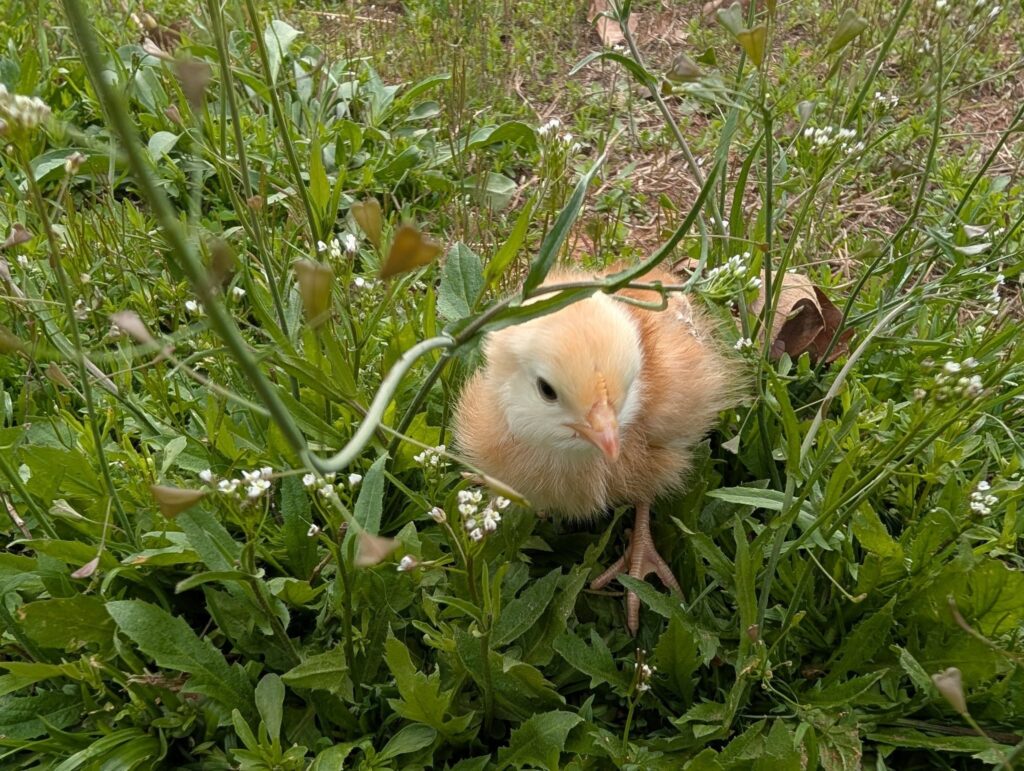- The Ohse Homestead Now Accepts Goldbacks!by dohse
We’re excited to announce that The Ohse Homestead now accepts Goldbacks as a form of payment!

As part of our commitment to building a more sustainable, resilient, and freedom-minded local economy, we’re happy to support alternative currencies like the Goldback. Whether you’re buying our pasture-raised pork, fresh eggs, or other farm products, you can now pay with this beautiful and innovative form of real gold money.
What Are Goldbacks?
Goldbacks are a spendable, interchangeable form of physical gold made with cutting-edge technology. Each Goldback contains a precise amount of 24-karat gold—layered between durable polymer sheets—making them both beautiful and resilient.
Unlike traditional coins or bullion, Goldbacks are designed to be used for everyday purchases. They come in small denominations (1, 5, 10, 25, and 50 Goldbacks), with each note containing a fractional amount of gold by weight. This makes it easy to use gold for regular transactions, without needing to break a large coin or deal with fluctuating market prices.
Goldbacks are accepted at hundreds of small businesses across several states, and now, they’re welcome here at The Ohse Homestead too!

Why Accept Goldbacks?
We believe in honest money, local trade, and supporting systems that give people more choice and control. Goldbacks are privately issued and backed by gold, not fiat currency or debt. They’re a powerful tool for anyone who values:
- Tangible wealth
- Local trade and barter
- A decentralized, inflation-resistant currency
If you already use Goldbacks, bring them along next time you stop by the farm. If you’re curious about them, feel free to ask us—we’re happy to show you one and share how they work!
How to Pay with Goldbacks at Our Farm
Just like cash, we’ll calculate your total, and you can pay with a combination of Goldbacks and/or U.S. dollars. We use the current Goldback-to-dollar exchange rate, which is published daily at Goldback.com or available from us when you visit.
We hope this gives our customers more flexibility and another way to support local, ethical farming.
—
Come visit us soon—and bring your Goldbacks!
- Why We Choose to Be a Straight Run Hatchery — And Why That’s a Good Thing
 by dohse
by dohseIf you’ve been shopping for chicks, you’ve probably seen the term “straight run” and maybe wondered what it means — and why some hatcheries, like ours, choose not to sex our chicks before sending them home with you.
Straight run simply means the chicks are sold as hatched — a natural mix of both males and females. We don’t sort or separate them by sex. And while it may sound like the “easy way out,” we actually believe it’s the better way — for the birds, for small farms, and for our customers.
Here’s why we proudly remain a straight run hatchery:
1. More Humane Practices
Sexing chicks (especially day-old) is a stressful process for the birds, and it often leads to a heartbreaking reality: male chicks from egg-laying breeds are typically culled by large commercial hatcheries because they aren’t profitable. That means millions of healthy little lives are ended simply because they hatched the “wrong” sex.
As a straight run hatchery, we believe every chick deserves a chance. Whether they’re destined to lay eggs, guard the flock, or fill a freezer, all birds have a purpose on a farm — and we trust our customers to make use of both hens and roosters.

2. Healthier Chicks
Skipping the sexing process means less handling and stress right after hatching, which often results in stronger, healthier chicks. We want our birds to thrive from day one — and being gently moved from incubator to brooder (not turned over, prodded, and sorted) helps set them up for success.
3. Better for Backyard Flocks and Homesteads
Roosters get a bad rap, but they can play a vital role in your flock. They’re natural protectors, they help maintain order, and yes — they fertilize eggs if you’re interested in hatching your own. By raising a straight run, you get to choose which roosters to keep, and you can process the extras for meat, sell or give them away, or use them to expand your own flock.
For many homesteaders, a straight run gives more value than an all-pullet (female) order — especially if you’re in it for the long haul.
4. More Affordable for Everyone
Sexed chicks cost more — not just because of the labor involved, but because hatcheries must cover the loss of all those unwanted roosters. By offering straight run only, we keep costs down and pass those savings on to you. That’s part of making small-scale farming and backyard poultry more accessible.
5. It Reflects Nature
Straight run is how nature intended. Every egg has a 50/50 chance of being male or female, and we believe farming should work with nature — not against it. By embracing that natural ratio, we help keep poultry farming more sustainable, ethical, and transparent.
In Conclusion
Being a straight run hatchery isn’t just a business decision — it’s a values-based one. We believe in humane, sustainable farming practices that support both our animals and our customers. Whether you’re growing your flock, teaching your kids about life on the farm, or raising your own meat birds, a straight run hatch gives you the most honest, natural start.
So when you order from us, you’re not just getting chicks — you’re making a difference in how poultry is raised and respected.
- 🐣 Track Your Hatch Like a Pro with the Chick Tracker 2025 🐥by dohse
If you’re a small farm or hatchery juggling hatching eggs, you know how important good record keeping is for success. That’s why we created the Chick Tracker 2025 – a powerful, easy-to-use spreadsheet that helps you track every egg from incubation to hatch.
Why Tracking Matters
Running a small operation doesn’t mean guessing your way through the hatching process. With Chick Tracker 2025, you can monitor key factors that directly impact hatch rates, chick health, and fertility, including:
✅ Number of eggs set per tray
✅ Hatch rates per tray and overall
✅ Duds and stillborns – catch fertility issues early
✅ Humidity levels during hatch – critical to avoid chicks dying mid-hatch
✅ Hatching dates by tray – know exactly when each batch is dueWhether you’re using a multi-tray incubator or a single-level setup, Chick Tracker 2025 adapts to your workflow.
🧪 What You’ll Be Tracking:
- Fertility Clues: Tracking duds helps you assess your rooster-to-hen ratio. Too many infertile eggs? Time to rotate your flock or add a new rooster.
- Stillborn Alerts: If you’re getting chicks that start to hatch and die before making it out of the shell, it’s often a humidity issue during the final days. With Chick Tracker, you’ll have the data to dial in the right conditions.
- Per-Tray Hatch Dates: Perfect for staggered hatching. Each tray can have its own expected hatch date, helping you plan ahead and reduce surprises.
📊 Features at a Glance:
- Visual Dashboard: Instantly see hatch rates, trends, and problem areas.
- Full Instructions Included: We’ve taken the guesswork out. Easy-to-follow guidance makes setup a breeze.
- Flexible Design: Works with both multi-level incubators and single units.
👨🌾 Built for Small Farms by Small Farmers
This isn’t just another generic spreadsheet. Chick Tracker 2025 was built on a real working farm to solve real hatching challenges. Whether you’re selling chicks, hatching for your own flock, or experimenting with rare breeds, this tracker will give you the clarity and control you’ve been missing.
🛒 Ready to Hatch Smarter?
Grab your copy of Chick Tracker 2025 today and take the guesswork out of your hatching season. Perfect for spring flocks, backyard breeders, and homesteaders alike.
- 🐣 You Can’t Manage What You Don’t Countby dohse
They say, “you can’t manage what you don’t measure,” and when it comes to hatching baby chicks, that couldn’t be more true.

In the past, we didn’t log much data about our hatching operation. We knew roughly how things were going, but we weren’t tracking the finer details—temperatures, humidity, turning intervals, egg weights, hatch rates. That meant if something went wrong—or went really right—we didn’t always know why.
But this year, we’re doing things differently.
With our new tracking system in place, we’re collecting detailed records for every batch of eggs that goes into the incubator. We’re monitoring and recording conditions throughout the entire process, from the day the eggs are set to the day the chicks hatch. That means we can now make informed adjustments—like fine-tuning humidity levels or adjusting turning frequency—and actually see how those changes affect hatch rates and chick health.

It’s already paying off. The insights we’re gaining are helping us raise healthier chicks, reduce waste, and improve the consistency of our hatches. And we’re just getting started.
By counting and tracking every step, we’re giving ourselves the data we need to make better decisions—and that’s helping us grow stronger from the inside out.
We’re excited about the direction we’re heading—and grateful that now, we can measure our way to success.
👉 We’re also fine-tuning our tracking worksheet and will be offering it soon for a small fee, so others can benefit from the system we’ve built.
Stay tuned as we share more insights from the hatchery!
- Hello world!by dohse
Welcome to WordPress. This is your first post. Edit or delete it, then start writing!
